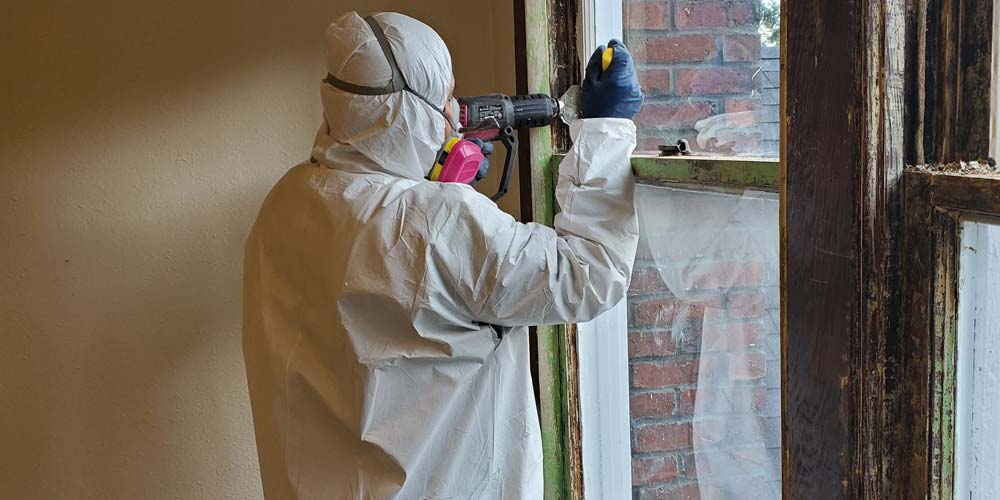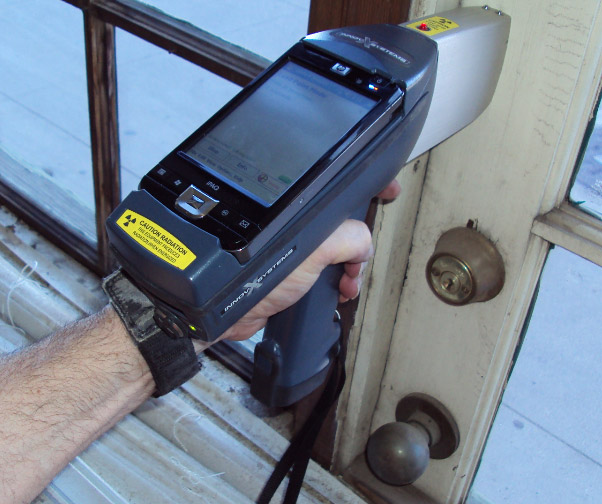Essential Devices and Methods for Efficient Lead Offense Cleanup
Resolving lead infractions effectively demands an extensive strategy that blends the right tools with strategic techniques. Simultaneously, the usage of specialized cleaning tools, such as HEPA vacuums and lead-specific cleansing agents, is imperative for detailed contaminant elimination. Efficient containment approaches, including plastic bed linen and negative air pressure systems, are crucial to avoid the spread of hazardous products.
Personal Protective Devices
Individual safety equipment (PPE) is a critical part in the effective management of lead contamination cleaning. PPE functions as a vital barrier, protecting workers from the dangerous effects of lead direct exposure, which can result in extreme health and wellness repercussions. The crucial PPE for lead cleaning consists of respirators, safety clothes, gloves, and eye security. Each kind of tools is especially made to mitigate different threats connected with lead particles and dirt.
Respirators, especially those geared up with HEPA filters, are essential for filtering system airborne lead particles, avoiding inhalation. Correct fit and seal checks are essential to ensure their efficiency. Safety clothing, including coveralls and non reusable suits, stops lead dust from adhering to employees' garments, decreasing the threat of secondary contamination. Gloves, usually made of nitrile or latex, protect the skin from direct contact with lead, while safety and security goggles or full-face shields safeguard the eyes from dirt and debris.
Furthermore, strenuous training on the proper usage and upkeep of PPE is essential. Workers must be enlightened on donning and doffing treatments to prevent contamination. Normal assessments and substitutes of PPE parts are necessary to maintain their safety capacities, making certain a secure and compliant cleanup operation.
Specialized Cleaning Equipment

An additional essential device is the wet/dry vacuum, which can efficiently tidy up both dirt and fluid pollutants. These vacuum cleaners often feature HEPA filters to provide an additional layer of security. Wet cleans or tack fabrics are likewise critical for surface area cleaning; they are especially developed to capture and hold lead bits, lowering the danger of spreading out contamination.
For even more stubborn down payments, specialized lead-removal cleaner are required. These representatives are formulated to damage down lead particles, making them much easier to remove. Scrub brushes with durable bristles can aid in this process, specifically on rough surface areas where lead dirt often tends to adhere extra strongly.
Additionally, encapsulants are made use of to secure lead-contaminated surfaces, stopping the launch of lead dirt. These specialized paints and layers are created to abide by numerous substratums, providing a long-lasting service for lead control.
Effective Control Methods
Reliable containment techniques are vital in minimizing the spread of lead contamination during cleanup tasks. Applying robust control techniques makes certain that lead particles do not move to untouched locations, thus protecting both workers and the setting. One key approach is using plastic sheet to seal contaminated areas. Sturdy polyethylene obstacles can be set up from floor to ceiling to develop a regulated work location, considerably reducing the danger of air-borne lead dust dispersal.

To improve containment, encapsulants can be related to surface areas that are not being gotten rid of or disturbed. These specialized coatings bind lead dust, decreasing its availability for resuspension. In addition, all employees need to put on appropriate Individual Safety Tools (PPE), including respirators and non reusable matches, to stop contamination spread.
Safe Disposal Practices
Guaranteeing secure disposal techniques is a vital component in the monitoring of lead contamination cleanup. Proper disposal minimizes the threat of lead coming back the environment and threatening public health (DOH & HPD Lead Violation Removal NYC).
Transferring lead waste needs adherence to stringent standards. Using qualified contaminated materials carriers guarantees that the materials are handled properly. Documents, including shows up describing the type and amount of waste, need to accompany deliveries to track the waste from the website of beginning to its final disposal location.
Designated contaminated materials disposal facilities are equipped to handle lead-contaminated materials securely. These facilities frequently employ advanced techniques such as stablizing, solidification, or chemical treatment to neutralize the lead before disposal. Landfilling in specialized, lined locations that stop leachate from contaminating groundwater is a common technique for last disposal.
Routine training for personnel his response associated with lead garbage disposal is crucial to keep safety requirements and prevent accidental exposure. By adhering to these methods, organizations can considerably decrease the environmental and health influences connected with lead contamination.
Regulatory Compliance Tips

Sticking to regulative conformity is vital in the successful implementation of lead contamination clean-up. Comprehending and complying with government, state, and local guidelines makes sure not only the security and wellness of people but likewise the lawful and financial well-being of the clean-up organization. The Environmental Security Agency (EPA) sets rigid requirements, such as the Lead Renovation, Repair Service, and Painting (RRP) Rule, which mandates correct accreditation and training for contractors managing lead-based activities.
Conformity begins with a complete evaluation of relevant laws and laws. Organizations should remain upgraded on any legislative modifications, which can be helped with with normal training sessions and registering for sector updates. Documents is one more critical compliance facet; visit our website maintaining comprehensive documents of all activities, including examination reports, staff member training logs, and disposal manifests, is necessary.
Furthermore, engaging with accredited lead examiners or run the risk of assessors makes sure that lead threats are appropriately identified and minimized. Employers need to implement the usage of Individual Protective Tools (PPE) and ensure that safety methods are purely adhered to. Last but not least, clear interaction with stakeholders, consisting of workers, clients, and regulative bodies, will foster a culture of conformity and liability, ultimately adding to a much safer and a lot more reliable lead cleaning procedure.
Conclusion
Efficient lead offense cleanup requires the assimilation of specialized tools and calculated techniques to make certain safety and efficacy. Utilizing HEPA vacuums, specialized cleaning up agents, like it and effective control techniques such as plastic sheeting and adverse atmospheric pressure systems is essential. Individual protective tools (PPE) safeguards employees from exposure, while risk-free disposal practices and rigorous adherence to regulative conformity are essential for responsibly managing contaminated materials. Jointly, these steps dramatically reduce health dangers and add to a cleaner setting.